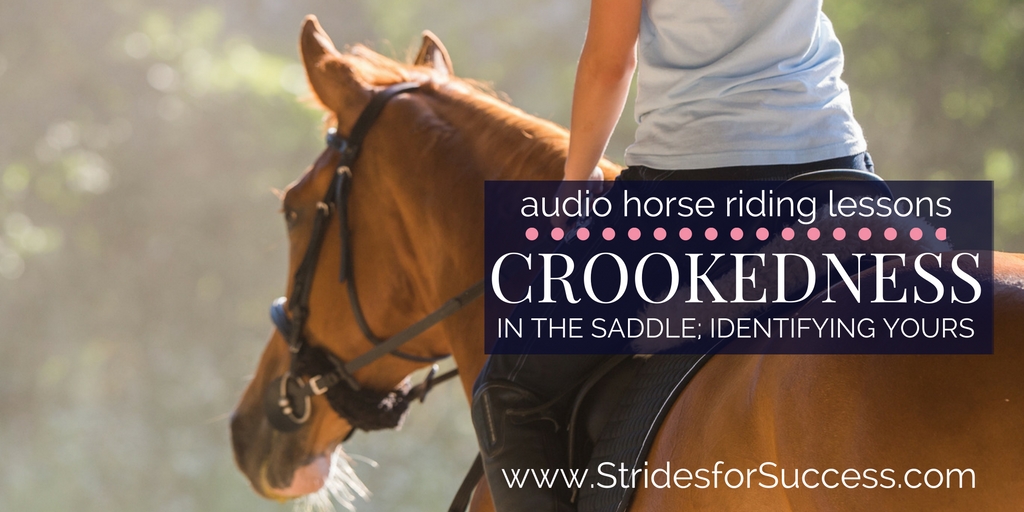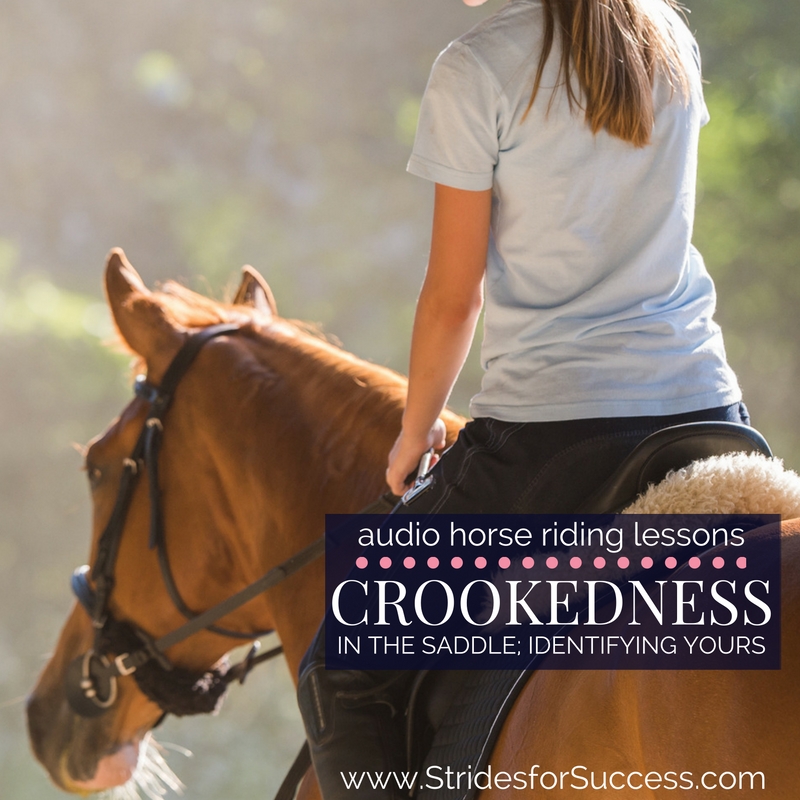Crookedness – it is a word and a concept that is continuously showing up when we talk about horses, riding and training… It is also a little like the ‘chicken and the egg’ – which comes first? Many riders make the mistake of thinking it is only the horse we are speaking about. Meanwhile, riders can be just as crooked, if not more so, than their horses – and because of the relationship, one will always affect the other.
When was the last time you honestly assess how straight or crooked you are when you are riding? Perhaps it all looks good when you are actually riding on the straight; but things become a little twisted when any change (either in direction, gait, tempo) happens.
Crookedness in riders shows up in lots of different ways. Sometimes it is very obvious, the stirrups are different lengths, or the rider is leaning. But other times it can be very subtle; perhaps the horse becomes disunited in the canter, or a hand or arm tends to dip on a corner.
Regardless of the degree of crookedness, what is almost agreed upon by all riders is that unless a conscious effort is made to practice symmetry in the saddle, crookedness will creep into your riding in some form or other. This is simply because all people have a dominant side, which will compensate for the weaker side – particularly when the going gets tough.
So, this being said, what can we do as riders to become more straight and, how can we then influence our horses to follow suit with us?
Assessing your horse & saddle
What many riders don’t realise is that crookedness is sometimes created by the horse itself or the saddle. Horses, just like us, have a dominant side. Why this is so has been the topic of many debates and there are many schools of thought on it – however what is important is that your horse favours one side or the other. Taking this into account and depending on the work or training a horse does, this can sometimes lead to the horse becoming unevenly muscled. One side of the body will become disproportionately stronger – and therefore larger – than the other. If the shoulder or back muscles are involved, this will then affect how the rider sits on the horse.

The other consideration before you even mount up is the flocking or padding in your saddle. Over time saddles become worn, just like a shoe would on your foot. This ‘shape’ can be influenced by a few different things, the rider, the horse or the quality of the saddle in general. The result is that the saddle is no longer symmetrical. This lack of symmetry can often be the cause of the uneven stirrups, or one seat bone being more forward or dropped than the other.
I suggest having a good look at both your horse and your saddle and stirrup leathers. See if there are any noticeable differences between the right and left side. If there are, have an appropriate professional assess ad make changes where necessary. Once that is done, you can then turn your attention to yourself.
Assess your reflection
Unfortunately not all riders are blessed to have mirrors in their arena, however this does not mean that they cannot make use of other ways to assess their crookedness when they are riding. There are windows that you can use as mirrors. You can also use your shadow on the ground. Both of those suggestions definitely require a little more effort on your part, but if needs must…
Begin by halting in front of the mirror / window / shadow. Square your horses shoulders to it, so you can see exactly how ‘equal’ you are on either side of your horse. Assuming that you have already checked your equipment and horse to make sure the issue is not stemming from there, check are your stirrups the same length? Are your shoulders the same height? If you and your horse could be safely chopped in half, head to tail, would both sides be an exact copy of each other?
Keep in mind that, if your head is also ‘straight’, your eyes won’t lie to you. Many riders spend so long being crooked that it feels ‘normal’ . In fact, when they are corrected, it feels so unusual and different, your brain tells you that it couldn’t possibly be right.
If you have been harbouring a certain crookedness in your riding for any length of time, you may very well have to retrain your brain to what is actually straight again.
If you do notice any crookedness here, look at ways you can measure this quickly when you move away from the mirror. Maybe it will involve looking if your knees are symmetrical. Or perhaps it you can place stickers on your clothes, marking your left and right point of shoulder, or hip. There are lots of ways you can get creative, but what is important is that you know what actual straight feels like and keep correcting things back to there.
Finding Straight when Riding
Once you have a good idea of what straight looks and feels like at the halt, you can begin accessing your position when riding. This is where your dominant side plays a big part, and where your markers or stickers will really help you if you don’t have mirrors in your arena.

Start off in walk on the straight. Notice if you are remaining symmetrical. Try focus your attention on your seat bones in particular, and the way your weight is distributed between them. It should be equally or evenly balanced between both seat bones.
Confusingly for many riders, ‘weighting’ your seat bone does not involved shifting your weight or lifting your weight off your other seat bone. It rather involves the muscles in your pelvic and core areas.
Keep in mind that regardless of what you are doing, their should be an equal amount of your body on either side of the horse. The left will not visit the right and vice versa. If you find yourself leaning or shifting over, bring it back to centre and straight before trying again.
Becoming a positive influence
It is only through continuous correction that you will overcome any crookedness in your riding. Once you are truly straight, you may find that a lot of your horses ‘crookedness’ will also vanish. As riders our relationship with our horse is a unique and special one. We are directly influencing each other all the time when riding.
Let your influence on your horse be a truly positive and straight one
Happy Riding
Lorna
There are 4 audio programs of step by step instructions on this topic waiting for you inside of Daily Strides Premium. You can simply download them to your phone and listen while you ride. You can find out more about Daily Strides Premium HERE
[wp-tiles post_type=”post” orderby=”date” order=”DESC” grids=”Simple”]
